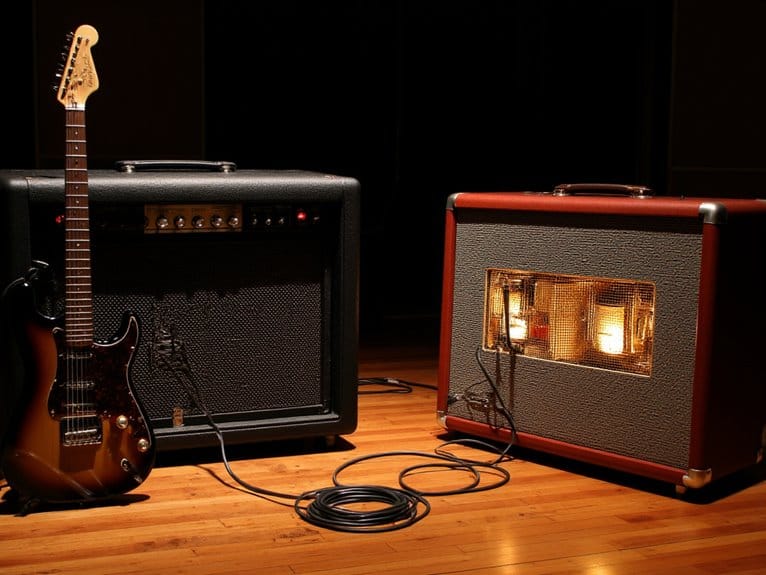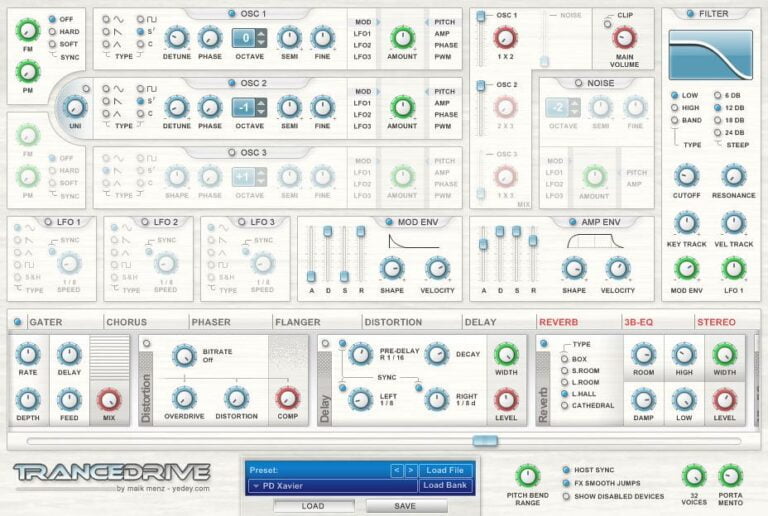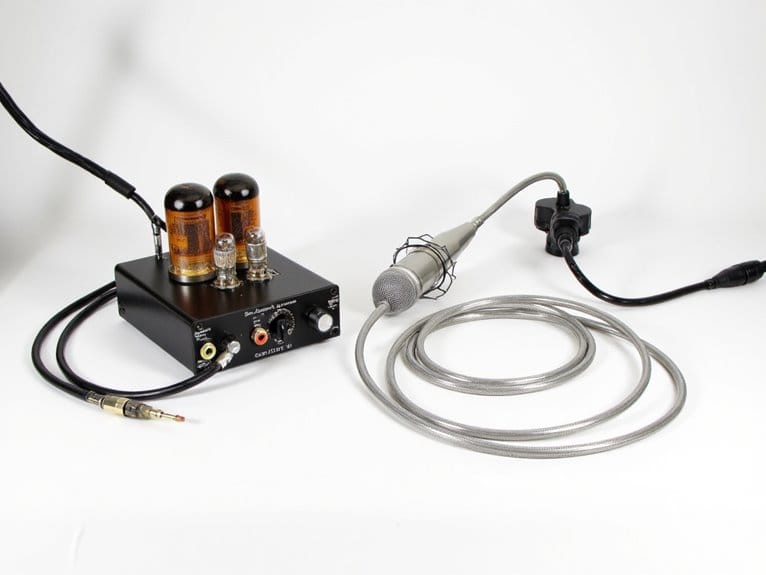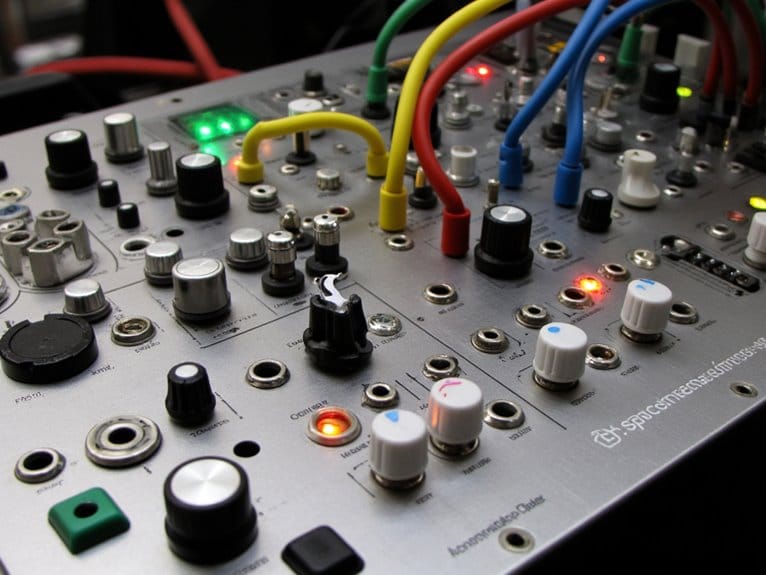Amp Modeling vs. Real Tubes: Closing the Gap
You’ll find that modern modeling amps like the $270 Boss Katana-50 MkII now deliver convincingly authentic tube tones that even experienced guitarists can’t reliably distinguish from $1,500 tube combos in blind tests. While purists still champion the organic compression and touch sensitivity of real tubes, today’s digital algorithms replicate vintage Marshall Plexi sounds with remarkable accuracy, offering consistent performance across all volume levels without the maintenance headaches of tube replacements and bias adjustments that traditional amps demand.
We are supported by our audience. When you purchase through links on our site, we may earn an affiliate commission, at no extra cost for you. Learn more.
Notable Insights
- Modern modeling amps successfully replicate vintage tube tones through advanced digital algorithms, making them viable alternatives.
- Modeling technology now offers improved touch sensitivity and dynamic response, addressing previous limitations in player interaction.
- Digital amps maintain consistent sound quality across all volume levels without requiring attenuators or compromising tone.
- Live performance differences between tube and modeling amps become less noticeable through PA systems and microphones.
- Modeling amps provide superior reliability and portability for professional touring compared to temperamental tube amplifiers.
The Practical Reality: Cost, Maintenance, and Convenience
While I’ve spent countless hours debating the merits of analog warmth versus digital precision, the reality is that most guitarists need to contemplate the practical side of their gear choices before diving into sonic philosophy.
Before getting lost in tonal debates, consider whether your gear actually serves your practical needs as a working musician.
When you’re facing budget considerations, the numbers tell a compelling story-a Boss Katana-50 MkII runs around $270, while that coveted Vox AC15 tube combo demands $799. Tube amps also tend to retain their value better over time, often maintaining or increasing in value while modeling amps may result in a loss of investment. For those on a budget, the Boss Katana-50 MkII offers impressive versatility and sound quality, making it a strong contender among the best combo amps for guitarists. Additionally, the convenience of its built-in effects and user-friendly interface can outweigh the allure of vintage tube tone for many players. Ultimately, balancing performance, cost, and long-term value is essential in making an informed decision.
Beyond initial cost, you’ll encounter significant maintenance challenges with tube amps, requiring periodic tube replacements, bias adjustments, and specialized repairs that modeling amps simply don’t demand. For bedroom practice sessions, many guitarists find that 20-50 watts RMS provides optimal sound without overwhelming their living space. Quality metal chassis construction with reinforced corners ensures your amp investment can withstand the rigors of regular transport and performance demands.
Factor in the weight difference-that AC30 weighs 32 kilograms compared to a lightweight modeling alternative-and you start appreciating why convenience matters more than purist ideology when you’re hauling gear nightly.
Tone Wars: When Digital Meets Analog Authenticity
When you plug into a modern modeling amp and dial in that vintage Marshall Plexi tone, you’re witnessing the culmination of decades spent analyzing vacuum tube circuitry through digital algorithms that capture preamp gain stages, EQ curves, and harmonic content with remarkable precision.
However, digital precision sometimes struggles with those subtle harmonic interactions that occur when you dig into the strings, particularly the volume-dependent tonal shifts that non-cascaded tube designs deliver naturally.
The battle between analog warmth and digital accuracy becomes most apparent during close personal listening, where tube amps exhibit organic compression and touch sensitivity that modeling technology still works to replicate perfectly.
Yet in live performance scenarios, most audiences can’t distinguish these nuanced differences due to microphone placement, PA systems, and mixing factors that level the playing field considerably.
Beyond the Bedroom: Volume, Dynamics, and Professional Applications
As you move beyond your bedroom practice sessions into venues where volume levels matter, the fundamental differences between tube amps and modeling technology become far more practical than philosophical. Understanding tube amplifier basics is essential for achieving that warm, rich tone that many musicians cherish. On the other hand, modeling technology offers versatility and convenience, allowing players to access a wide range of sounds without the bulk of traditional gear. Ultimately, the choice between these technologies will depend on personal preference and the specific demands of each performance situation.
Real tubes demand physical attenuators to manage stage volume, often compromising that coveted tone you’ve dialed in at home. Modelers, however, maintain consistent sound quality regardless of output level, making them invaluable for larger venues or noise-sensitive environments.
The dynamic response that makes tubes so expressive becomes problematic when you can’t push them to their sweet spot. While modeling technology continues improving its touch sensitivity and breakup characteristics, it excels where tubes struggle: providing reliable, portable solutions for professional touring situations where consistent direct injection into PA systems trumps the unpredictable nature of miked tube amplifiers.
On a final note
You’ve witnessed how amp modeling has evolved from bedroom practice tools to legitimate studio alternatives, closing the gap between digital convenience and tube authenticity. While purists still argue for analog warmth, modern modeling delivers professional results at fractional costs with zero maintenance headaches. Whether you’re tracking at 3 AM or performing live, today’s technology offers genuine musical solutions that would’ve seemed impossible just a decade ago.





